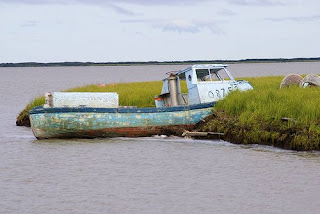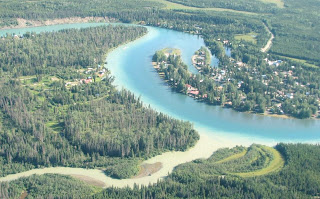
Alaska's Kenai River is 82 miles long. The river's volume output averages about 6,000 cubic feet per second. The combination of location, salmon abundance and natural beauty combine to make the Kenai River Alaska's most popular sports fishing destination.
The river is so important that the salmon fisheries of both lower Cook Inlet, of which the Kenai is a part, and upper Cook Inlet, are managed primarily in relation to how Kenai River sustainability and use can best be accommodated.
This Kenai River-centric fishery management history is one of the main reasons the salmon fisheries of upper Cook Inlet have slowly withered over the past generation or so. Kenai and Soldotna-based politicians and businesses have benefitted from the Kenai River-centric fish management and business paradigm.

Alaska's national congressional delegation, and such past governors as Tony Knowles, Bill Sheffield and Frank Murkowski have all supported this model, at the expense of the upper Cook Inlet's salmon stock sustainability.
The Kenai River's two Sockeye salmon runs are well-known, as are the river's Rainbow trout and Coho salmon runs. But the Kenai River Kings are one of Alaska's most famous fish. Only a few streams in Alaska boast larger average return weights than the Kenai. Those streams are quite small, though. About 65,000 King Salmon return to the Kenai River each year, making the return there the third largest among Alaska rivers.
The Copper River, with its annual commercial catch of around 40,000 Kings, and total return of around 70,000 or more, is the second biggest river in Alaska for Kings.
By far, the river with the largest return population of salmon has historically been the 2,300 mile-long Yukon River. But that has changed dramatically over the past decade or so. A river that recently saw returning King salmon populations in the hundreds of thousands, will most likely be closed this year.
Sadly, it has been reported, that already in 2009, by-catch of Yukon River-bound Chinook (King) salmon in the Bering Sea already (in February!) has surpassed what will be the allowable catch of the entire Yukon River subsistence and commercial fisheries:
Already in 2009, bycatch numbers are climbing, according to reports from crew members out West, for salmon and halibut.

Imagine how Alaskans would react if, year after year, a Seattle-based, partially foreign-owned fleet came into the bottom of Cook Inlet, and dragged up over 75% of the salmon coming into Cook Inlet. Imagine if this fleet wasn't even there to fish salmon. Imagine if the crewmen either brought these Anchor, Kasilof, Kenai, Susitna and Deshka River-bound King salmon back to Seattle to go to the Salvation Army, or - if they needed all the space in the hold left, for more Pollock - threw the valuable Kings overboard while the observers aboard their ships were kept out of sight.
That is what has been happening in the Bering Sea for decades. It has gotten to the point that the Seattle-based trawlers are taking so much of the Yukon, Kuskokwim and other river-bound salmon in their by-catch, that there might well not even be a Yukon River season in 2009. Or 2010. Or - ever again.

Could this happen to the Kenai River? Not likely. If the salmon runs on the Kenai will die, it will be from other kinds of greed and hyper-development. We've seen how much resistance some user groups of the river and property along the river have taken to sound policies and initiatives designed to improve salmon habitat.
Why, then, are rivers closer to the Bering Sea being allowed to wither away, allowing communities that have survived, even thrived there for twice or three times as there has been an English language, to die? Or to be located to Palinesque strategic hamlets, to be called "Cluster Villages," where kids would be trained to perform for tourists.
No doubt, one of the song-and-dance routines would be about the salmon that used to come up the river. You can go watch Native American songs and dances like that already, down on the Klamath, Columbia, Snake and Fraser Rivers.
I'm not sure whether the Yukon and Kuskokwim cultures are being allowed to die almost as fast as Gaza more because they are non-White, or because they are out-of-sight, out-of-mind.
images:
Upper Kenai River
Sen. Lisa Murkowski with trophy King
Abandoned gillnetter near Nunam Iqua
riverside housing development near Kenai